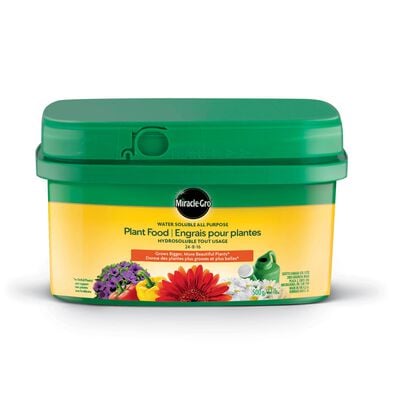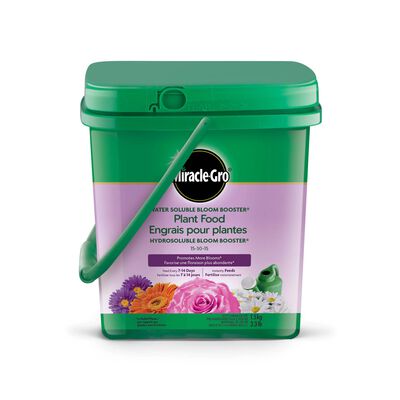
How to Keep Planted Containers Looking Great This Summer
Planted containers make it fun and easy to put an edible or ornamental garden virtually anywhere—on a balcony, patio, deck, or even a rooftop. And just like in-ground or raised bed gardens, planted containers can keep producing beautiful blooms and a bountiful harvest all season long. Just a bit of routine care is all it takes!
Here's how to keep planted containers looking great this summer.
Position Pots Wisely
Smart planning when you establish your container garden will set you up for a successful growing season and great-looking containers all summer long.
Position your planted containers thoughtfully, because the location you choose influences your plants' climate. Make sure your planted containers are on a level surface where they'll get adequate direct sunlight—about 3 to 5 hours a day for cool-weather-loving plants like lettuce and spinach, and about 6 to 8 hours daily for warm-season plants like tomatoes, peppers, and petunias—as well as some shade. South- and west-facing locations will be warmer and sunnier than north- or east-facing ones. If your containers sit on or near brick, concrete, blacktop, or other heat-reflective surfaces, they may be subject to more intense heat than you think. Though smaller containers can be easily repositioned to take advantage of sun and shade, large ones can be quite heavy to move later on, so consider putting your biggest containers on rolling plant caddies, just in case.
If you're growing climbers like pole beans and peas, think about placing those containers near a wall, trellis, fence, or railing to give them a surface to grab onto. Once they start climbing, they'll need to stay put! Edibles like tomatoes and peppers will require a bigger container to start, as well as sturdy cages or stakes to support them as they grow.
You'll also want to put your containers close to a convenient watering source. Since containers hold a limited amount of soil, they dry out quickly and require frequent watering—during very hot, dry spells, you may need to water some plants a couple of times a day. If your hose is far away or you can't easily access a sink to fill your watering can, watering will become a chore. Near the kitchen is a great location for easy watering (and harvesting) of container-grown herbs, vegetables, and cut flowers, provided there's enough light. Speaking of watering…
Water Frequently
Once your planted containers are in place, you can care for them in pretty much the same way you would an in-ground garden—but you'll need to be prepared to water them more frequently. The limited amount of soil surrounding a container plant dries out faster than the soil in an in-ground or raised-bed garden. (The smaller the container, the more often it will need water.) Summer weather, with its warm sunshine and cool breezes, also plays a part in drying out soil.
So, keep an eye on those weather conditions. Don't wait for your plants to wilt or show signs of stress! Feel the soil regularly to test for dryness, and if the top inch is dry, it's time to water. Soak each container, concentrating water at the plant's base with a watering can or sprinkler attachment on your hose, until the soil surface is visibly moist and water runs out the drainage holes in the bottom.
Are you forgetful when it comes to watering? Here are a few reminder tricks: Keep your containers close together to increase humidity and retain more moisture, and to make the task of watering go faster. Use a layer of mulch to help retain moisture in larger containers, taking care to keep it away from plant stems. You can also consider planting in self-watering containers, which are designed with water reservoirs and wicking systems in case you miss a watering or need to be away from home for a day or two.
Feed Regularly
Planted containers also become depleted of nutrients far more quickly than other garden types, due to the smaller amount of soil surrounding plants' roots. To replace lost soil nutrients and ensure healthy, productive plants, feed your planted containers every 7 to 14 days during one of your regular waterings. Use a water-soluble fertilizer that suits the nutritional needs of whatever you're growing, and mix it into your watering can following the instructions on the label. If you're growing a combination of edibles and ornamentals, Miracle-Gro® Water Soluble All Purpose Plant Food will provide healthy nutrition for everything in your container garden. Miracle-Gro® Water Soluble Tomato, Fruit & Vegetable Plant Food works great for tomatoes, squash, peppers, cucumbers, and carrots, as well as basil and other herbs. For flowers, feed Miracle-Gro® Water Soluble Bloom Booster® Flower Food as soon as you see buds and continually while they're in bloom. Be sure to read the directions—and follow them!
Watch Daily
Performing regular garden maintenance tasks like weeding, inspecting for pests and disease, and pruning throughout the summer will keep your container garden lush and vibrant while preventing problems.
Do your best to pull weeds as they appear. They can spring up in containers quickly, stealing moisture and nutrients from your growing plants. Make a habit of removing weeds when you feel soil for dryness.
Inspect plants for pests and signs of animal damage. Hungry rabbits, snails, insects, and other pests aren't put off by containers. Be prepared to set up barriers, elevate, or even temporarily relocate containers if critters are snacking on your plants. Remove pests like beetles and aphids right away if you find them—or signs of their damage—on leaves. (Holes and brown spots, as well as brown or yellowing leaves, can be signs of pest problems.) Pests can spread easily between closely spaced or crowded containers, but if caught early, you can move the affected containers away from the others to isolate them and solve the issue.
Checking plants for other signs of trouble is important, too. Fungus and mildew might mean your plants are too crowded, not getting enough air circulation, or not getting adequate sun.
Brown or mushy stems may be a sign of root rot from poor drainage. Be careful not to overwater, make sure your containers have enough holes in the bottom for good drainage, and if you use saucers or trays to protect surfaces under your containers, don't allow them to collect and hold water.
Prune your plants as needed to help them grow fuller and produce more. Deadhead annual flowers when they've gone by and remove brown or damaged leaves. Shape plants and encourage new growth by pinching branch tips with your clean fingers or cutting them with a sharp pair of snips. (New shoots will grow from those spots!) Cut back leggy vines in the same way to help them grow bushier. Pruning isn't something you'll need to do every day, but doing it occasionally will yield big benefits—like more abundant flowers, a more plentiful harvest, and a more beautiful container garden—even as summer eventually turns into fall.
One last thought: If you get tired of any of the plants in your container gardens, or a flower or veggie just isn't performing the way you'd hoped, go ahead and replace it! That's one of the beauties of container gardening—you can always change your mind and go in another direction. Once you're happy with what you have, remember that just a few minutes of TLC each day will help your container garden flourish throughout the summer and all the way into fall.


